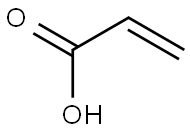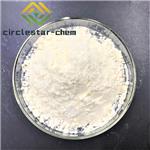Description
Acrylic anhydride is used to prepare specialty acrylate, acrylamide monomers. Forms cyclic anhydrides on polymerization and does not produce crosslinks in polymers. It is used in the preparation of acrylic resin. And it is also used in organic synthesis. For example: it can react with adamantan-1-ol to get acrylic acid adamantan-1-yl ester. This reaction needs catalytic agent acidic catalyst and solvent cyclohexane by heating. The yield is 95%.
Synthesis
The synthesis of Acrylic anhydride is as follows:
In a 3-liter, four-necked glass reactor provided with a thermometer and a stirrer were placed, in a dry air atmosphere, 1,240 g of methylene chloride, 1.08 g (0.5% by mass) of Sumilizer GM, 0.65 g (0.3% by mass) of Sumilizer TP-D, 0.65 g (0.3% by mass) of Sumilizer WX-R, 216 g (3.0 mol) of acrylic acid and 264 g (1.5 mol) of benzenesulfonyl chloride. The mixture was cooled to 5°C. Then, 304 g (3.0 mol, 1 equivalent relative to the acids generated from benzenesulfonyl chloride) of triethylamine was dropwise added in 2 hours with the temperature of the reaction mixture being controlled at 30°C or lower. After the completion of the dropwise addition, stirring was made for 1 hour with the same temperature being kept. The reaction mixture was analyzed by GC, which indicated that the conversion of acrylic acid was 99%. After the completion of the reaction, 375 g of water was added to the reaction mixture to wash the reaction mixture. The reaction mixture was further washed twice each time with 563 g of water, after which distillation was conducted to remove methylene chloride. The yield of the acrylic acid anhydride obtained was 172 g and 91% and its purity by GC analysis was 99%, and no high-molecular by-product was detected.






